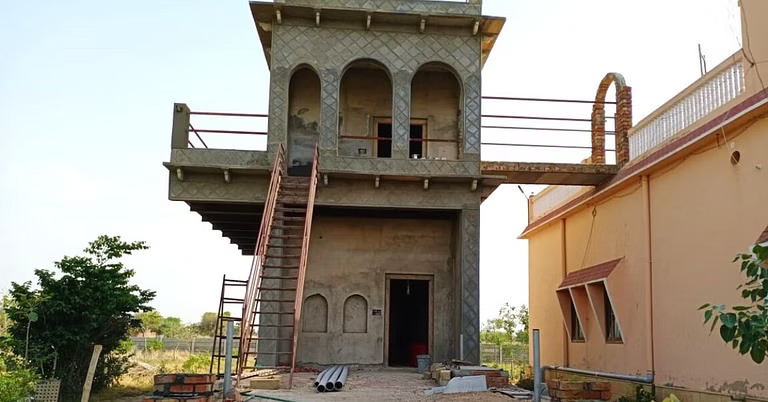Engineer’s Carbon Negative Bricks Are Made of Stubble; Cut Construction Costs by 50%
Tarun Jami, the founder of GreenJams, came up with Agrocete, an eco-friendly brick option that reduces construction costs by 50% and increases thermal insulation by 50%.

This article has been sponsored by Wingify Earth.
When Tarun Jami, a civil engineer, was driving around in the national capital during a trip in 2019, he says he “almost crashed the car due to smog and low visibility”.
“I even felt affected health-wise,” he recounts, adding that when he probed into the deteriorating air quality in Delhi, he was astounded at the statistics.
“Stubble burning contributed to 44 per cent of Delhi’s poor air quality,” he says.
Hence, Tarun decided to take it in his stride and do something about this problem. Today, his company GreenJams, founded in 2017 in Vishakhapatnam, is creating carbon-negative building materials from agricultural biomass and hemp blocks. This was all directed towards changing the course of conventional construction.
How is the construction sector contributing to climate change?
Conventional construction materials — gravel, sand, and cement — pose a threat to the environment due to the emissions that they create. The process is extensive and begins with limestone and clay extracted from quarries, and crushed and mixed with iron ore or ash. The mix is then fed to cylindrical kilns at around 1,450 degrees Celsius.
The next step is calcination wherein the mixture is split into calcium oxide and CO2, giving out a grey marble-sized product — clinker. This product is then cooled and mixed with gypsum and limestone and sent to concrete companies. Right from the first step to the last, the process leads to a tremendous release of carbon dioxide.
In light of this, GreenJams and its eco-friendly construction techniques focus on more sustainable alternatives.
Tarun employed the knowledge he gained during his graduate years into coming up with Agrocrete — a product made of upcycled material. Agrocrete had the ability to reduce construction costs by 50 per cent while increasing thermal insulation by 50 per cent and cutting down on the time required for construction.

“In 2013, during my graduation, I came across the material Hempcrete and was impressed by its carbon-negative qualities and thermal capabilities. I decided to study it,” he recounts. Agrocete is a version of this same technology made from agricultural residue and industrial by-products.
A brick that stands the test of time
Explaining how the process works, Tarun says they collect residue from farmers, and then chop and process it.
“The residue is mixed with our innovative product BINDR — a 100 per cent up-cycled low-carbon replacement of Portland cement made from industrial by-products of steel, paper and power industries. As it comes in powder form, the material also becomes useful for masonry mortar and plastering,” he says.
He elaborates that the resulting product is as strong as a conventional brick, but with improved thermal conductivity, less water absorption tendency, the ability to capture tonnes of carbon emissions, and a life duration of at least 75 years.
“The blocks are 30 per cent lighter, making it convenient for masons to work on. They’re also bigger, which reduces the construction time and cost of labour,” he adds.

Excellent performance and durability
In Tarun’s own experience, the bricks performed well when he worked with them in the endeavour to build a 1,100 square feet load-bearing structure while extending his office space into a manufacturing unit at Roorkee.
“We built it for Rs 1.95 lakh, as against the Rs 5.5 lakh that would have been required if we used conventional materials. It also captured 3.1 tonnes of CO2 emissions in the process, making it a carbon-negative building,” says Tarun. If you found our stories insightful, informative, or even just enjoyable, we invite you to consider making a voluntary payment to support the work we do at The Better India. Your contribution helps us continue producing quality content that educates, inspires, and drives positive change. Choose one of the payment options below for your contribution- By paying for the stories you value, you directly contribute to sustaining our efforts focused on making a difference in the world. Together, let’s ensure that impactful stories continue to be told and shared, enriching lives and communities alike. Thank you for your support. Here are some frequently asked questions you might find helpful to know why you are contributing?

In addition to this, the bricks were simple to work with. “We finished the work in about four days, which would have otherwise required 10-12 days for the same amount of construction,” he says.
This story made me
-
97
-
121
-
89
-
167















